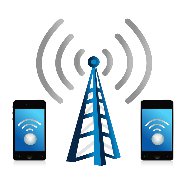India ranks 138 in 2016 ICT Development Index
India has been ranked 138th in the 2016 ICT Development Index out of a total of 175 countries. In 2015, India ranked 135th position.
The index was released as part of the annual Measuring the Information Society Report for 2016 of the International Telecommunications Union (ITU).
What is ICT Development Index (IDI)?
- The ICT Development Index (IDI) rankings compare the state of ICT development across countries. It is published annually by the UN ITU.
- The IDI is based on 11 ICT indicators, grouped in three sub-indices: access, use and skills.
- It is standard tool that governments, operators, researchers, development agencies and others can use to measure the digital divide and compare ICT performance within and across countries.
Key Highlights of 2016 IDI
- Top 5 Countries: South Korea (1st), Iceland (2nd), Denmark (3rd), Switzerland (4th) and United Kingdom (5th).
- Bottom 5 Countries: Niger (175), Chad (174), Guinea-Bissau (173), South Sudan (172) and Burundi (171).
- Region wise Facts: European and countries in Americas region have made significant progress in ICT development.
- In the Asia Pacific region, India is ranked at 26 out of the 34 countries. 9 countries in region remained least concerned. Africa was named as the worst performing region.
- India related facts: India’s score has improved from 2.50 (in 2015) to 2.69. In terms of sub-indices access, India ranks 139 in 2016 as against 140 in 2015; use sub index, India has moved up to 142 in 2016 from 143 in 2015; skills sub index, India ranked 122.
- Broadband access in India has become cheaper compared to the year 2015, but the data caps are among the most highest and restrictive in the world.
- In India over 40% of the population still does not own a mobile phone. There is also a significant gender gap in mobile phone access in India.
- Besides, there is lack of mobile ownership seen in lower income category, and among those who are not educated. People in rural regions are more likely to not own a mobile phone.
- Fixed line telephone subscriptions have gone down in India, and now only two people in a hundred have a landline.
- However, mobile phone subscriptions, computers in households, amount of available bandwidth, and access to an internet connection have all seen increase in India.
- The percentage of users on the internet has gone up from 21% in 2014 to 26% of the population in 2015.
Way forward
- For improving the IDI, India needs to improve internet access to the underserved to reduce digital divide.
- There is also a need to change the definition of the minimum broadband speed.
- The FUP (fair usage policy) levels must be relaxed which are among the most restrictive in the world.
- Efforts should be taken to promote the use of mobile phones in rural areas. Besides more efforts must be taken to increase access of mobile phones to more women.
Month: Current Affairs - November, 2016


